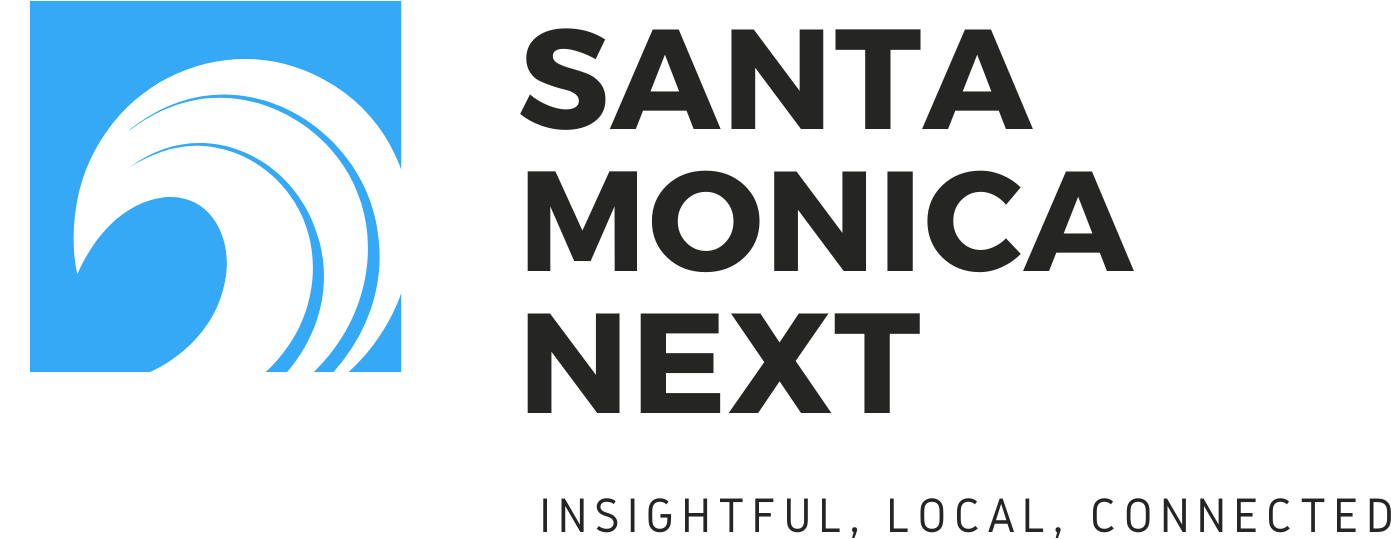The following is a submission from SMC.
Santa Monica College (SMC) celebrated its new state-of-the-art LEED Gold-certified Mathematics + Science Building on its Main Campus at 1900 Pico Boulevard with an open house held Saturday, Nov. 1, 2025. Built with funding from voter-approved bond measures AA, V, and the State of California, this building brings together four departments—Earth Sciences, Mathematics, Life Sciences, and Physical Sciences—under one roof for the very first time.
Housed in this building, the new Santa Monica College Planetarium and Observatory features a 0.7-meter CDK700 telescope, the only such telescope available to the public in this region of Los Angeles. The building also won a design award in 2024 from the Los Angeles Business Council in the “under construction category.”
At a ribbon-cutting ceremony preceding the open house and presentations, Chair of the SMC Board of Trustees Dr. Nancy Greenstein said: “Each community member who voted for bond measures AA and V demonstrated their belief in SMC’s lifechanging mission, and that the opportunity to innovate, to shine, and to pursue the best-possible higher education should be open to all.”
SMC Superintendent/President Dr. Kathryn E. Jeffery noted that the building was “designed to inspire and to represent SMC’s vision of education: the striving toward a better, more sustainable future while staying true to a shared past.” The new Mathematics + Science building features a seamless integration and restoration of the Memorial Clocktower. Dedicated shortly before Memorial Day in 1955, the clocktower commemorates SMC student veterans who lost their lives in World War II and the Korean War.

“[This building] stands as a testament to what happens when education reaches outward toward the future while remaining rooted in the pursuit of truth, in the unbiased government of evidence, and in curiosity,” Vice President of Academic Affairs Jason Beardsley said, also drawing attention to what it contains: “Inside you’ll find 22 classrooms and 11 laboratories equipped with the newest tools for learning — from document cameras that let professors project live experiments onto high-definition displays, to channel glass walls that flood rooms with natural light, creating spaces where ideas, equations, and most importantly, minds, can grow.”
Beardsley stated that the new PlaneWave CDK700 telescope “opens a true window to the universe and puts Santa Monica College in the company of research universities around the world . . . our planetarium features a Digistar 7 projection system — the same technology used at Griffith Observatory — further linking SMC to a global network of research institutions and universities.” He quoted Professor of Astronomy Simon Balm who shared that “the new facility transforms astronomy from something you read about to something you experience.”
Math Professor and Assistant Department Chair Brian Rodas—who has been teaching at SMC for over 24 years—noted that this building is long overdue. “To say that this space has transformed the teaching-learning experience is truly an understatement,” he said, adding that the building provides more rooms with Hyflex capabilities, which allows instructors to teach students both in-person and online at the same time. “As you probably know, a very large percentage of SMC students are first-generation, and many hold down part-time jobs while pursuing an education here to make a better life for themselves and their families,” Rodas added.
Professor of Chemistry and Department Chair of Physical Sciences Dr. Jennifer Hsieh spoke on behalf of the three science departments making use of the new building. “In partnership with our scientist-colleagues in the Departments of Earth and Life Sciences, we now have the opportunity to realize three key goals: advancing cross-disciplinary collaboration, developing innovative pedagogy, and finding the inspiration for our future courses and programming,” Dr. Hsieh said, pointing out that her department alone gained two new labs and an additional lecture space, rooms “designed to be fresh, bright, and filled with natural light.”
Giving just one example, Dr. Hsieh noted that “the physics lab was designed to accommodate the entire physics for engineering sequence, which includes red lights and blackout curtains for optics work.”
The Mathematics + Science Building had its soft opening in late 2024, and began serving students then. The building includes 22 classrooms, 11 labs, study areas, and advanced instructional technology in addition to the planetarium and observatory.
